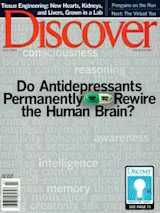Go ahead. Stare.
Inspect the weathered face of senior citizen Dr. Sid, with its backcountry topography of forked veins, crow's-feet, and liver spots. Lose yourself in the freckles and windblown hair of lovely Aki. Watch fear corrugate Neil's brow, and note that his sweat dribbles in complex courses, tracking every ridge of flesh.
The objects of such scrutiny don't mind, because they aren't real. These characters in the movie Final Fantasy: The Spirits Within look, move, and speak like human beings, but they are computer-generated animations, as artificial as Bart Simpson or Mickey Mouse.
As such, they are surprisingly unsettling. One last bastion of human discrimination— our ability to tell whether the person on the screen is real or simulated— is about to crumble. When the film, a production of Square Pictures, opens July 11, it will signal a change not only in cinema but also in television, computer monitors, ...














